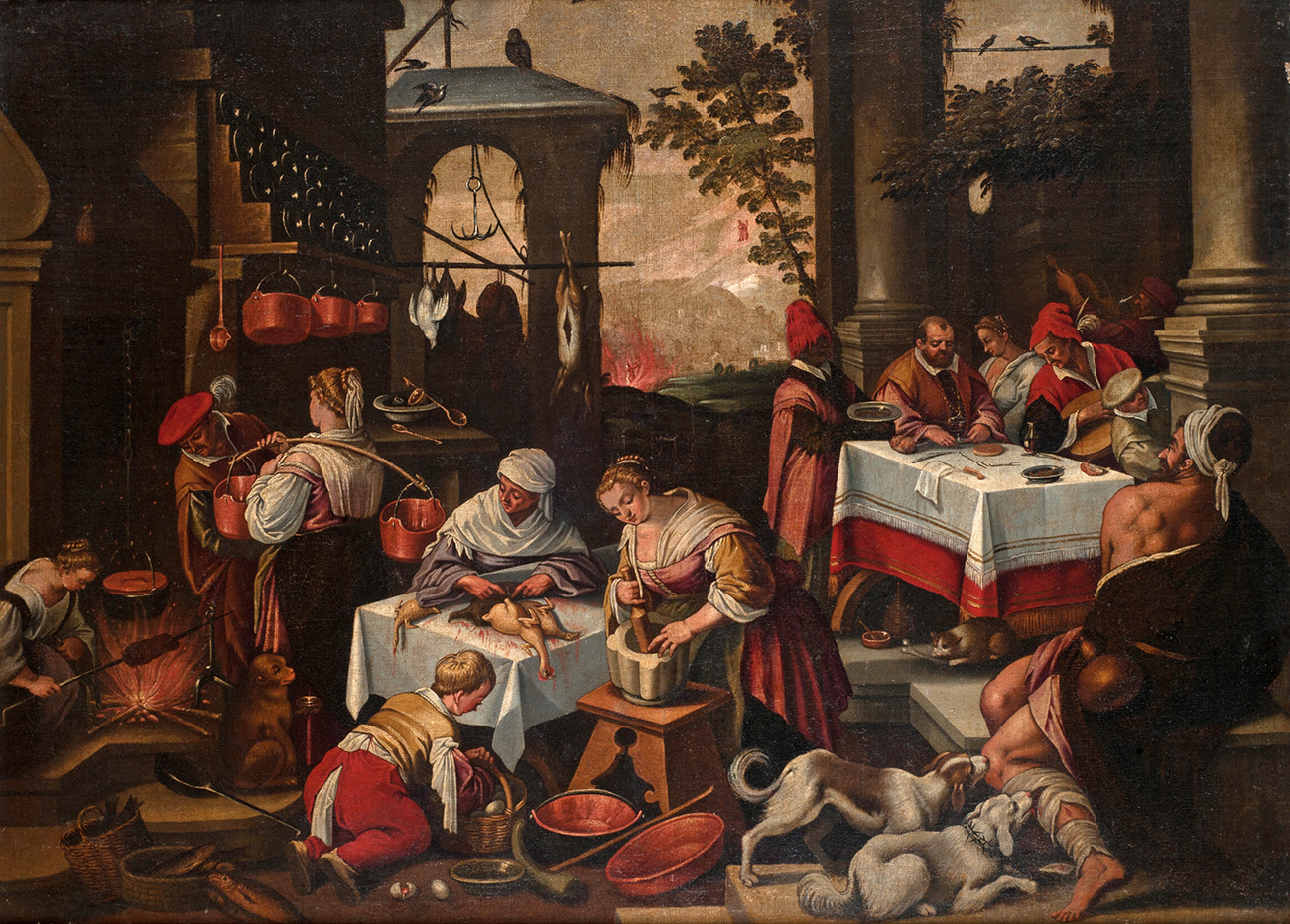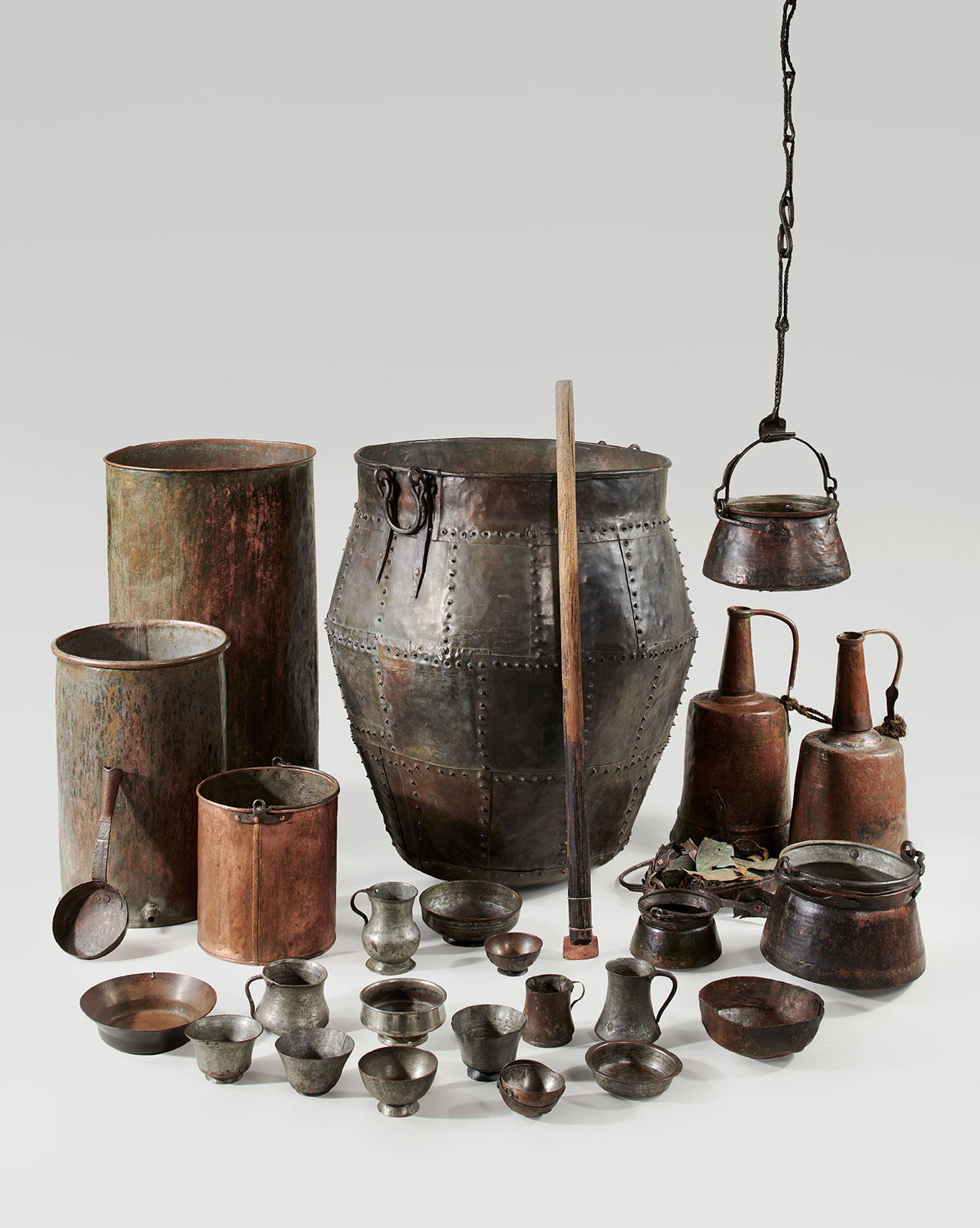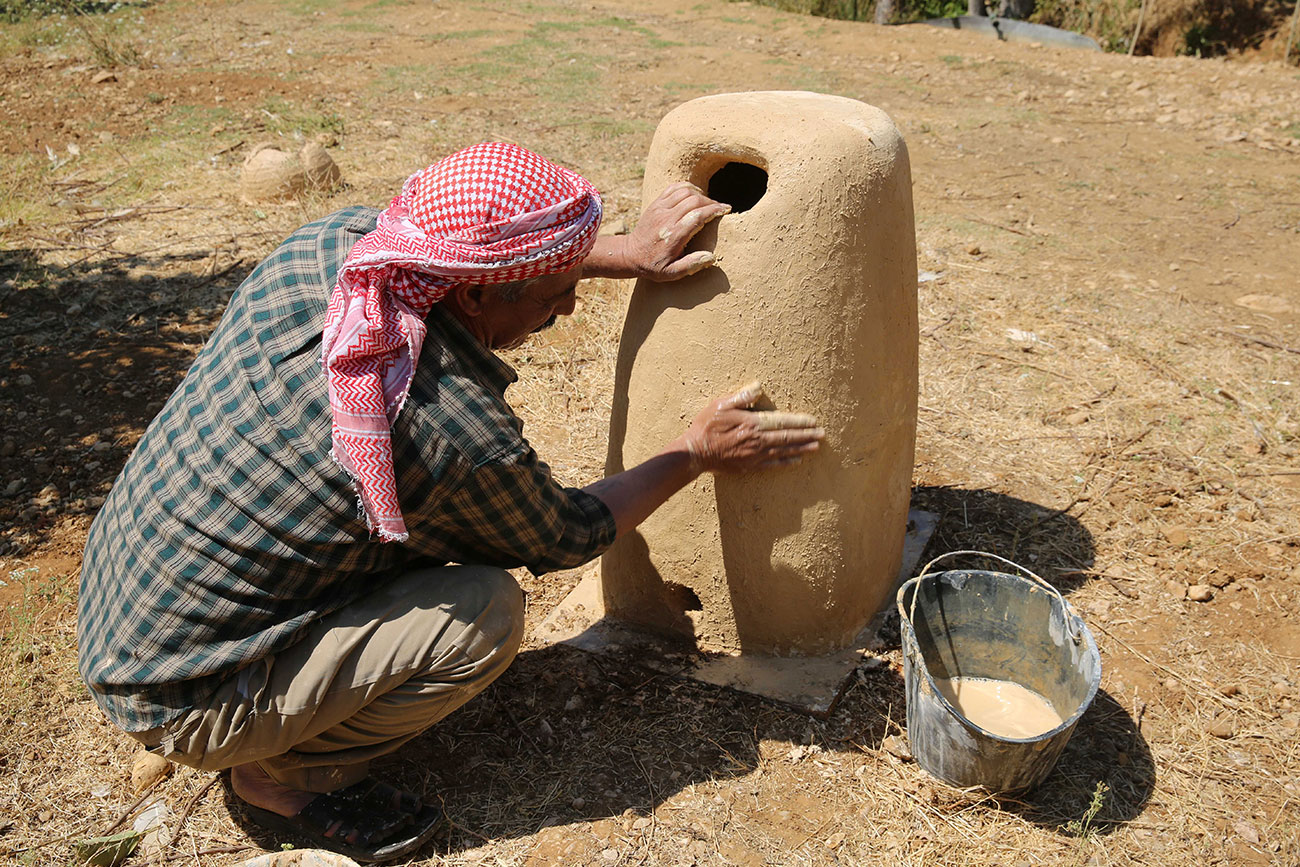The grand Meze





The Galerie de la Méditerranée is the Mucem’s exhibition space for semi-permanent exhibitions. From 19 May 2021, its first section will host a new exhibition: “The grand Meze”.
We are all familiar with the recommendation to “eat five fruits and vegetables a day”, but who knew that it took its inspiration from the “Cretan diet”, also known as the “Mediterranea diet”? This concept, created in the 1960s by the American epidemiologist Ancel Keys, was inscribed in 2010 in UNESCO’s Representative List of the Intangible Cultural Heritage of Humanity, thus promoting its recognition and globalisation.
The Mediterranean diet is the result of a construct that has always been enriched with external contributions throughout history. But how can we define and preserve geographical and cultural culinary authenticity, while sharing it with the greatest number? Moreover, how to protect a diet without preventing it from evolving? And finally, how can it remain permeable while at the same time also remaining authentic? These are the questions posed by the exhibition “The grand Meze”, which takes us from field to plate, and from traditional Mediterranean culinary know-how to globalised food standards.
The Mediterranean diet today is, in fact, synonymous with two simultaneous and antagonistic trends: on the one hand, its globalisation, and on the other hand, the necessary reappropriation in the Mediterranean of its production and cuisine. The exhibition invites us to grasp its specificities as well as how it has evolved.
It is organised into two parts:
From field to plate: some basics about food in the Mediterranean
Two agricultures coexist while concurrently being opposed to each other. On the one hand, there is the family-led, food-producing agriculture that respects the environment, but is not very profitable. On the other, there is the intensive, export-led agriculture that needs to satisfy world demand for Mediterranean products. The latter operates irrespective of seasonality or environmental considerations, with worker exploitation sometimes akin to slavery.
Their cuisines also work in opposition. On the one hand, there is the traditional or “home” cuisine that requires patience and know-how. On the other hand, there is the food industry, which frees the consumer from the constraints of cooking, reduces preparation times, but also causes a certain worldwide standardisation of tastes.
Dietetics also plays an important role in the Mediterranean diet, as do “cultural” factors such as the use of sugar and alcohol during festivities, and religious and individual dietary prescriptions due to a specific food intake or intolerance.
Between here and elsewhere: a globalised construct and the reappropriation by geographic areas
Because of its geography, the Mediterranean has been a melting pot since the Neolithic period, when food and recipes either passed through or remained. Little by little, this circulation led to a globalisation of food. However, the exhibition offers a counterpoint to this by reflecting on initiatives linked to the reappropriation of agriculture with reference to the example of France’s région Sud Provence-Alpes-Côte d’Azur.
Similarly to a great meal with varied dishes and flavours, the exhibition presents a selection of 550 heritage objects and documents from 35 museums, including the Cité de la céramique (Sèvres and Limoges), the Musée du Quai Branly – Jacques Chirac (Paris), the Musée d’Orsay (Paris), the Bibliothèque Nationale Universitaire de Strasbourg, the Musée de Tessé (Le Mans, France), the Museu Valencià d’Etnologia (Valencia, Spain), the Museo e Bosco Real di Capodimonte (Naples, Italy), the National Museum of Archaeology (Beirut, Lebanon), the Museu Marítimo (Ílhavo, Portugal), and the Slovenski etnografski muzej (Ljubljana, Slovenia). Ethnographic pieces were specially acquired by the Mucem for the exhibition from Georgia, Greece, Italy, Lebanon and Portugal. The Mucem is also producing 13 audiovisual projects and 6 new works designed especially for this exhibition by Michel Blazy, Nicolas Boulard, Laurent Derobert, Lena Durr, Laurent Fiévet and Gerald de Viviès.
Curator:
Édouard de Laubrie, manager of collections and research, responsible for the “agriculture & food” theme at the Mucem
Deputy Curator:
Lucas Gomez, art historian
Scenography:
Christine Ilex Beinemeier
Interview with Edouard de Laubrie, curator of the exhibition
The Galerie de la Méditerranée is the Mucem’s exhibition space for semi-permanent exhibitions. From 19 May 2021, its first section will host a new exhibition: “The grand Meze”.
We are all familiar with the recommendation to “eat five fruits and vegetables a day”, but who knew that it took its inspiration from the “Cretan diet”, also known as the “Mediterranea diet”? This concept, created in the 1960s by the American epidemiologist Ancel Keys, was inscribed in 2010 in UNESCO’s Representative List of the Intangible Cultural Heritage of Humanity, thus promoting its recognition and globalisation.
The Mediterranean diet is the result of a construct that has always been enriched with external contributions throughout history. But how can we define and preserve geographical and cultural culinary authenticity, while sharing it with the greatest number? Moreover, how to protect a diet without preventing it from evolving? And finally, how can it remain permeable while at the same time also remaining authentic? These are the questions posed by the exhibition “The grand Meze”, which takes us from field to plate, and from traditional Mediterranean culinary know-how to globalised food standards.
The Mediterranean diet today is, in fact, synonymous with two simultaneous and antagonistic trends: on the one hand, its globalisation, and on the other hand, the necessary reappropriation in the Mediterranean of its production and cuisine. The exhibition invites us to grasp its specificities as well as how it has evolved.
It is organised into two parts:
From field to plate: some basics about food in the Mediterranean
Two agricultures coexist while concurrently being opposed to each other. On the one hand, there is the family-led, food-producing agriculture that respects the environment, but is not very profitable. On the other, there is the intensive, export-led agriculture that needs to satisfy world demand for Mediterranean products. The latter operates irrespective of seasonality or environmental considerations, with worker exploitation sometimes akin to slavery.
Their cuisines also work in opposition. On the one hand, there is the traditional or “home” cuisine that requires patience and know-how. On the other hand, there is the food industry, which frees the consumer from the constraints of cooking, reduces preparation times, but also causes a certain worldwide standardisation of tastes.
Dietetics also plays an important role in the Mediterranean diet, as do “cultural” factors such as the use of sugar and alcohol during festivities, and religious and individual dietary prescriptions due to a specific food intake or intolerance.
Between here and elsewhere: a globalised construct and the reappropriation by geographic areas
Because of its geography, the Mediterranean has been a melting pot since the Neolithic period, when food and recipes either passed through or remained. Little by little, this circulation led to a globalisation of food. However, the exhibition offers a counterpoint to this by reflecting on initiatives linked to the reappropriation of agriculture with reference to the example of France’s région Sud Provence-Alpes-Côte d’Azur.
Similarly to a great meal with varied dishes and flavours, the exhibition presents a selection of 550 heritage objects and documents from 35 museums, including the Cité de la céramique (Sèvres and Limoges), the Musée du Quai Branly – Jacques Chirac (Paris), the Musée d’Orsay (Paris), the Bibliothèque Nationale Universitaire de Strasbourg, the Musée de Tessé (Le Mans, France), the Museu Valencià d’Etnologia (Valencia, Spain), the Museo e Bosco Real di Capodimonte (Naples, Italy), the National Museum of Archaeology (Beirut, Lebanon), the Museu Marítimo (Ílhavo, Portugal), and the Slovenski etnografski muzej (Ljubljana, Slovenia). Ethnographic pieces were specially acquired by the Mucem for the exhibition from Georgia, Greece, Italy, Lebanon and Portugal. The Mucem is also producing 13 audiovisual projects and 6 new works designed especially for this exhibition by Michel Blazy, Nicolas Boulard, Laurent Derobert, Lena Durr, Laurent Fiévet and Gerald de Viviès.
Curator:
Édouard de Laubrie, manager of collections and research, responsible for the “agriculture & food” theme at the Mucem
Deputy Curator:
Lucas Gomez, art historian
Scenography:
Christine Ilex Beinemeier

Interview with Edouard de Laubrie, curator of the exhibition


